Tetrabutylammonium hydroxide
- CAS NO.:2052-49-5
- Empirical Formula: C16H37NO
- Molecular Weight: 259.47
- MDL number: MFCD00009425
- EINECS: 218-147-6
- SAFETY DATA SHEET (SDS)
- Update Date: 2024-01-05 16:34:11
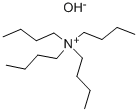
What is Tetrabutylammonium hydroxide?
The Uses of Tetrabutylammonium hydroxide
TBAOH may be used as an ion-pairing reagent in mobile phase preparation for reverse phase ion-pair high performance liquid chromatography during chromium (III) and chromium (VI) determination.
Properties of Tetrabutylammonium hydroxide
| Melting point: | 27-30 °C(lit.) |
| Boiling point: | 100 °C |
| Density | 0.995 |
| Flash point: | 7°C |
| storage temp. | Store below +30°C. |
| solubility | Miscible with organic solvents. |
| form | Solution |
| color | APHA: ≤30 |
| Odor | Odorless |
| Water Solubility | Soluble in water, methanol. |
| Sensitive | Air Sensitive/Hygroscopic |
Safety information for Tetrabutylammonium hydroxide
| Signal word | Danger |
| Pictogram(s) |
 Corrosion Corrosives GHS05  Exclamation Mark Irritant GHS07 |
| GHS Hazard Statements |
H314:Skin corrosion/irritation H317:Sensitisation, Skin |
| Precautionary Statement Codes |
P261:Avoid breathing dust/fume/gas/mist/vapours/spray. P272:Contaminated work clothing should not be allowed out of the workplace. P280:Wear protective gloves/protective clothing/eye protection/face protection. P303+P361+P353:IF ON SKIN (or hair): Remove/Take off Immediately all contaminated clothing. Rinse SKIN with water/shower. P305+P351+P338:IF IN EYES: Rinse cautiously with water for several minutes. Remove contact lenses, if present and easy to do. Continuerinsing. |
Computed Descriptors for Tetrabutylammonium hydroxide
| InChIKey | VDZOOKBUILJEDG-UHFFFAOYSA-M |
Abamectin manufacturer
PACIFIC ORGANICS PVT LTD
1Y
Phone:+91-9322467890
Whatsapp: +91 9322467890
product: Tetra Butyl Ammonium Hydroxide 40% Solution 2052-49-5 99%
Tatva Chintan Pharma Chem Limited
1Y
Phone:+91-7574848533
Whatsapp: +91-7574848533
product: 2052-49-5 Tetrabutylammonium hydroxide 98%
Prabhat Chemiorganics Limited
1Y
Phone:+91-2240861600
product: Tetrabutylammonium hydroxide 2052-49-5 98%
Demi Specialty Chemicals and Co
1Y
Phone:+91-9850559429
Whatsapp: +91-9850559429
product: Tetrabutylammonium hydroxide 98%
New Products
3-N-BOC-(S)-AMINO BUTYRONITRILE 4-Piperidinopiperidine 2-Methyl-4-nitrobenzoic acid 2-(4-bromophenyl)-2-methylpropanoic acid 4-Acetyl-2-methylbenzoicacid Acetyl-meldrum's acid Ethyl-4-Pyrazole carboxylate 2,6 Di acetylpyridine 2,6-Pyridinedimethanol 5,7-Dichloro-3H-Imidazo[4,5-B]Pyridine 5-Bromo-2-Methoxy-4-Methyl-3-Nitropyridine 2-Fluoro-5-Iodopyridine 2-Fluoro-5-Methylpyridine 2-Chloro-3-Bromo-5-Amiopyridine METHYL-4-(BUTYRYLAMINO)3-METHYL-5-NITROBENZOATE TRANS-CYCLOBUTANE-1,2- DICARBOXYLIC ACID 5-Nitro indazole R-(-)-5-(2-AMINO-PROPYL)-2-METHOXY-BENZENESULFONAMIDE 1,3-cyclohexanedione 4-Aminophenaethylalchol (S)-(+)-4-BENZYL-2-OXAZOLIDINONE 3-NITRO-5-ACETYL IMINODIBENZYL 4-FLUORO PHENYL MAGNESIUM BROMIDE 1.0 M IN THF 1-HYDROXY-4-METHYL6-(2,4,4-TRI METHYL PHENYL)-2-PYRIDONE MONO ETHANOL AMINE(PIROCTONE OLAMINE)Related products of tetrahydrofuran
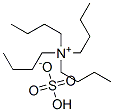
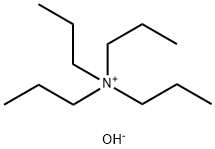
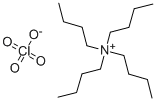

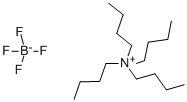
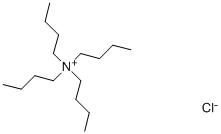
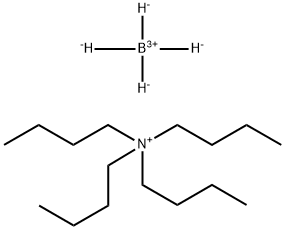
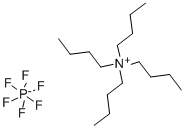
You may like
-
 Tetra Butyl Ammonium Hydroxide 40% Solution 2052-49-5 99%View Details
Tetra Butyl Ammonium Hydroxide 40% Solution 2052-49-5 99%View Details
2052-49-5 -
 2052-49-5 Tetrabutylammonium hydroxide 98%View Details
2052-49-5 Tetrabutylammonium hydroxide 98%View Details
2052-49-5 -
 Tetrabutylammonium hydroxide 2052-49-5 98%View Details
Tetrabutylammonium hydroxide 2052-49-5 98%View Details
2052-49-5 -
 Tetrabutylammonium hydroxide 98%View Details
Tetrabutylammonium hydroxide 98%View Details
2052-49-5 -
 13463-67-7 Titanium Dioxide 99%View Details
13463-67-7 Titanium Dioxide 99%View Details
13463-67-7 -
 143-07-7 99%View Details
143-07-7 99%View Details
143-07-7 -
 20776-67-4 99%View Details
20776-67-4 99%View Details
20776-67-4 -
 acid blue 113, acid navy blue , wool navy blue 0View Details
acid blue 113, acid navy blue , wool navy blue 0View Details
3351-05-1
Statement: All products displayed on this website are only used for non medical purposes such as industrial applications or scientific research, and cannot be used for clinical diagnosis or treatment of humans or animals. They are not medicinal or edible.